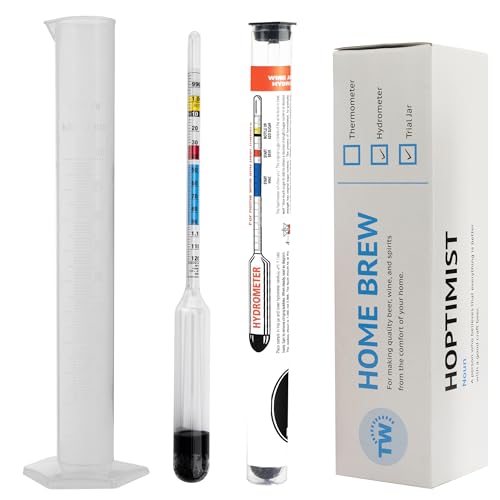- Joined
- Aug 23, 2021
- Messages
- 4,315
- Reaction score
- 4,725
For a variety of reasons, this is my fermenting/bottling process
But this last bottle I opened is fascinating, as it does have the fruit explosion in the glass. It's from a different box of bottles, so my best guess is that the beer stratified to a certain extent in the fermenter, with the beer at the top/bottom being in contact with the hops more (depending on whether the hops floated or sank - I just chucked them in rather than using a spider/depth-charge) and getting a LOT more hop flavour. As the beer got gently bottled, it didn't mix, so the bottles from the bottom/top ended up with a LOT more hop flavour/aroma than the stuff in the middle of the fermenter.
It's really quite incredible. This is a completely different beer from the one I had yesterday, despite being literally the same batch from the same fermenter!
- I don't use a bottling bucket (too much faff)
- I bottle straight from the fermenter (there is a convenient tap at the bottom I can squirt beer straight into the bottle)
- I prime each bottle individually (1/2 or 1 tsp of sugar per 500ml bottle to keep it simple)
- I don't put the priming sugar into the fermenter, as then I would have to stir it all up, which would stir up all the trub
But this last bottle I opened is fascinating, as it does have the fruit explosion in the glass. It's from a different box of bottles, so my best guess is that the beer stratified to a certain extent in the fermenter, with the beer at the top/bottom being in contact with the hops more (depending on whether the hops floated or sank - I just chucked them in rather than using a spider/depth-charge) and getting a LOT more hop flavour. As the beer got gently bottled, it didn't mix, so the bottles from the bottom/top ended up with a LOT more hop flavour/aroma than the stuff in the middle of the fermenter.
It's really quite incredible. This is a completely different beer from the one I had yesterday, despite being literally the same batch from the same fermenter!








































